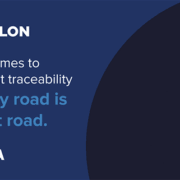When it comes to food and beverage and pharmaceutical safety, traceability is the baseline for future and sustainable success. Without it, vital products risk spoilage, impacting not only just the bottom line but also consumer safety. Ingestible and medicinal goods tend to be more prioritized since nearly 80% of consumers do not trust manufacturers to properly enforce safety measures around product quality. Moreover, drug recalls have increased steadily for the past two years, with 195 kinds of drugs pulled from shelves since 2017 – mostly due to poor quality control. Improper track and trace systems have often produced one or more of the following consequences:
- Extensive fees and expenses stemming from downtime while production lines determine points of error. Recurrent issues may also lead businesses to sever ties with questionable companies, ultimately breaking down supply chains.
- Damaged brand image still remains as one of the top deterrents of businesses since consumers are less likely to choose businesses known for even one safety issue.
- Legal action may be taken on the part of affected consumers, resulting in broken consumer trust and even changes in laws and regulations.
It’s safe to assume food, beverages, and medicine will always be in demand for the years to come, which means effective traceability will also be highly sought to ensure perishable items are safe for consumers. As a result, automation continues to lead the modernization wave within manufacturing and distribution plants since it facilitates real-time track and trace for easier quality checks. However, complex training and long implementation times can stifle modernization’s benefits when it comes to effective traceability. That’s why simplicity and scalability have become foundational in accelerating deployment for faster efficiency. Whether it be through RFID scanning or mobile label printing, a user-friendly traceability system should be able to…
- Reduce illegible manual data entry – Pencil and paper reporting done in haste can result in illegible documentation, complicating future audits. Moreover, files may not be properly sorted and filed, taking time away from productive workflows as workers must spend time looking for vital information. On the other hand, automated data capture through purpose-built devices like Zebra’s DS3600 scanners connect data directly to your centralized database with nothing but a trigger pull, protecting data legibility while empowering workers to process products more quickly.
- Close communication gaps between manufacturers and distributors – As seen in recent news, supply chain changes can strike at any given moment, creating challenges for operations using just-in-time inventory management systems. Mobile computers integrating push-to-talk features and cellular connectivity and apps can bridge communication gaps by making sure teams and businesses are notified of any changes as soon as they happen.
- Incorporate touch-screen usability for younger workers – As younger workers ages 18-35 enter the workforce, legacy green screen apps may pose a higher learning curve even though they’re familiar to seasoned warehouse workers. That’s why applications like Zebra’s All-Touch Terminal Emulation have been developed to migrate TE screens onto a touchscreen interface for easier usability.
- Facilitate data sharing without compromising security – As data is shared digitally, it becomes a target for today’s cybercriminals. To combat threats, Zebra strengthens Android for Enterprise with mobility Extensions and LifeGuard, providing 90-day security patches, two-factor authentication, government-grade encryption, and many other tiered security parameters for uncorrupted data.
Learn how food and beverage businesses are enhancing operational visibility with Zebra in our vision study, available here.
As supply chains grow more complex, operational visibility will remain essential to ensure competitive product quality and consumer trust for every industry. Schedule a preliminary consultation with Avalon’s visibility experts to see how you can expand transparent tracking in your operations with simplistic and intuitive technologies.


